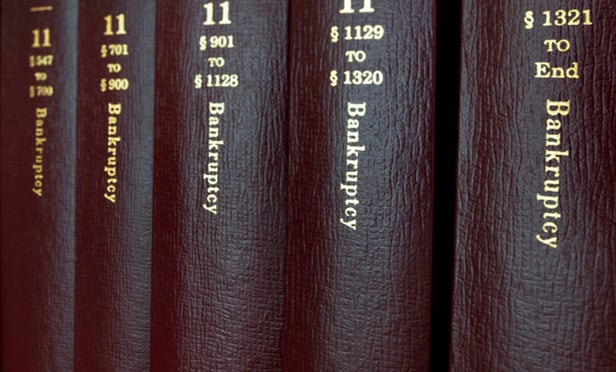Features

Patent Policing: Federal Circuit Upholds District Courts’ Inherent Authority to Sanction Party Conduct
In recent decisions, the Federal Circuit affirmed the inherent powers of district courts to investigate and address potential party misconduct in patent litigations, including suspected fraud and bad faith conduct. This article delves into these key cases that upheld district courts’ policing by standing orders or sanctions and underscore the importance of transparency and proper conduct in patent litigation.
Features

Reading the Tea Leaves: Jury Awards $2+ Million for Bigelow’s “Manufactured in the USA 100%” Label
On April 8, 2025, a California jury found that R.C. Bigelow, Inc., the well-known manufacturer of Bigelow teas, intentionally or recklessly misled consumers by claiming that some of its teabags were “Manufactured in the USA.” The price for this mislabeling was steep, with the jury awarding the class action plaintiffs $2.36 million.
Features

Navigating The Matrix: Mapping Your Firm's Capabilities in a Complex Legal Landscape
The concept of "The Matrix" has existed for decades in professional services firms, though it represents a relatively new framework within the legal industry. This powerful approach to understanding organizational capabilities and client relationships offers law firms a strategic advantage in today's competitive marketplace.
Features

The 56% Problem: Manual Document Tasks Are Holding Lawyers Back — AI May Be the Solution
A new generation of legal tech, including rapidly advancing AI and AI assistants, is introducing capabilities that don’t just automate individual steps. These tools act as proactive collaborators, intelligently navigating complex documents, surfacing key risks, applying context, and taking action. They’re helping legal teams move from manual to marvelous — and that transformation is happening faster than many realize.
Features

DJK Enterprises: Prepetition Waiver of Automatic Stay In Previously Negotiated Forbearance Is Unenforceable
A recent bankruptcy court decision has added its perspective to an increasingly divergent line of case law scrutinizing the enforceability of a debtor’s prepetition waiver of the automatic stay afforded to it by Section 362(a) of the Bankruptcy Code.
Features

DraftKings Loses Bid for Interlocutory Appeal in Lawsuit Over Use of MLB Players’ NILs
A federal judge in Pennsylvania rejected popular sports-betting platform DraftKings’ attempts to certify questions to the appellate court in a name, image and likeness (NIL) dispute with MLB Players Inc.
Features

Supreme Court: Statements Made to FDIC Need to Be “False,” Not Just “Misleading”
This article describes the prosecution in Thompson, then turns to the Supreme Court’s rejection of the government’s contention that 18 U.S.C. §1014 criminalizes misleading as well as false statements.
Features

Commercial Real Estate Insurance Taking More Comprehensive Approach to Risk Evaluation
The commercial property insurance industry is undergoing a dramatic shift. Gone are the days when property owners and operators could simply provide a building appraisal or portfolio valuation to an insurance broker, who would then reach out to a handful of insurance companies to obtain quotes.
Columns & Departments

Landlord & Tenant Law
Defense Due To DHCR’s Refusal to Correct Registration Mistake; Tenant’s Breach of Contract Claim Survives Motion to Dismiss; Acceptance of Surrender Does Not Relieve Tenant of Liability for Damages
Features

Swearing Behind: Overcoming Asserted Prior Art in PTAB Proceedings, Part 2
This two-part article discusses the various legal and evidentiary requirements for antedating and removing prior art that patent owners should consider when their pre-AIA patents are challenged based on a prior art publication or activity that is not otherwise subject to a statutory bar. Part One led off with a discussion of the legal requirements for antedating prior art by establishing an earlier invention via: 1) conception and diligent reduction to practice; and 2) actual reduction to practice. Part Two discusses the legal requirements for removing prior art that discloses an inventor’s own work and the evidentiary requirements for swearing behind prior art.
Need Help?
- Prefer an IP authenticated environment? Request a transition or call 800-756-8993.
- Need other assistance? email Customer Service or call 1-877-256-2472.
MOST POPULAR STORIES
- CLE Shouldn't Be the Only Mandatory Training for AttorneysEach stage of an attorney's career offers opportunities for a curriculum that addresses both the individual's and the firm's need to drive success.Read More ›
- Discovery of Claim Construction and Infringement Analysis May be Compelled Prior to a Markman HearingA defendant in a patent infringement suit may, during discovery and prior to a <i>Markman</i> hearing, compel the plaintiff to produce claim charts, claim constructions, and element-by-element infringement analyses.Read More ›
- AI's Growing Impact On the Gaming IndustryThe gaming and wagering sector has begun to cross paths with artificial intelligence technology in ways both predictable and unforeseen. As with other industries, AI technology inevitably has found its way into various components of the gaming experience. What is striking, however, is how AI is revolutionizing gaming for operators, regulators, suppliers and patrons alike.Read More ›
- <b><i>Online Extra</b></i><br> Law Firms, Legal Departments Predicted to Focus More on IT RiskOverall global spending in the information security services and products sector will total $86.4 billion this year, an increase of 7% over last year.Read More ›
- Location, Location and Location (But Relocation?)Given the age-old maxim of retailers that what matters is 'Location, Location and Location,' it is often difficult for an in-line retail tenant to confront the fact that its landlord can require it to relocate its store to other space in a mall or shopping center. On the other hand, owners of malls and shopping centers must retain the right to expand, to add new anchors and to remerchandise their properties from time to time — thus, the 'Relocation' provision found in virtually all forms of in-line retail leases. This article explores the major issues that a relocation provision creates for a retail tenant and how some of those issues might be addressed in the lease.Read More ›
